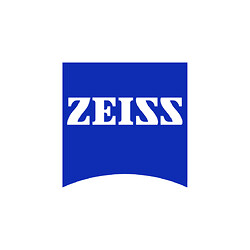Revealing the secrets of a part
CT inspection in automation technology at Festo.
Katharina Steinlein works for the automation specialist Festo. She is responsible for all quality inspections in the field of materials analysis and measurement technology. If problems with a component arise in production, her team, almost like detectives, sets out to find the cause of the failure. In the course of her work, quality standards are defined using CT technology and the ZEISS INSPECT inspection software.
Who is Festo actually?
Many of our everyday products are packaged by means of automated filling and packaging systems. This is exactly what Festo does. In the 1950s, the supplier of automation technology was the first company in Europe to use compressed air as a drive medium in automation. Today, the range comprises over 33,000 products and system solutions. These include servo controllers, valves and control technology. The industries that benefit from Festo technology are as diverse as the products: from the food industry and the automotive sector to medical technology and the pharmaceutical industry.
The large product range presents Festo with particular challenges in quality management. The production machines often have a parts variation of 3000-4,000 units. Given such a high variance, quality standards play a major role. These are rolled out globally from the headquarters in Esslingen, Germany. "The technology standards are defined here at our headquarters to ensure reproducible results and comparability between the plants and to save on development work," explains Horst Lang, Head of Corporate Quality Operations Support.
The headquarters act as driving force for innovation and centrally specifies measurement specifications and processes, measurement systems and the software to be used. This enables exchange and comparability between the various plants and a fast response in the event of issues with product quality.
The analytical laboratory reveals the secrets of a part
How exactly are these standards defined? The headquarters centrally inspect and approve prototypes before global production. In addition to the measurement technologies, the headquarters also specify the exact quality control process right through to the measurement plan. This is where the impressive analytical laboratory, headed by Katharina Steinlein, comes into play. The laboratory offers a wide range of analytical methods for materials testing and metrology, from metallography to polymer analysis. "Materials analysis focuses on material characteristics and material data. Metrology provides us with geometric surfaces or geometric dimensions and it is the combination of both that actually tells us something about the part," explains Katharina Steinlein.
Her team finds solutions for all kinds of tasks: In addition to initial sampling, the analytical laboratory is also consulted during product development, for example for tool corrections or for quality assurance of supplier parts. The overall objective of Steinlein and her team becomes clear when there are returns: The laboratory analyzes what has happened to the part in question. Almost like detectives, the team sets out to find the cause to solve problems sustainably and prevent future failures.
CT technology helps with challenging tasks
A particular challenge in quality management arises from the numerous materials of the products, which require different measuring technologies. Typical parts from Festo are often plastic and aluminum injection-molded parts and multi-component parts for which conventional surface analysis with a coordinate measuring machine is not sufficient. In these cases, Festo relies on computed tomography. "The focus here is on nondestructive testing. For example, we check the pressure die casting quality, assembly situations and also the geometric dimensions in the traditional way – as in the measuring room," explains Katharina Steinlein.
Festo uses ZEISS INSPECT for analyzing CT data. The inspection software offers them numerous evaluation options in just one solution. "In addition to CT technology, evaluation also plays a major role and for this it is important to be able to work effectively and at a high level," says Horst Lang. "We no longer have to switch between different software solutions. Instead, we stay in one family and can make statements and evaluations." This advantage can be clearly seen in the significantly lower training effort required and the time saved during evaluation. Previously, geometric evaluations such as nominal-actual comparisons or GD&T inspections were carried out in one software and the defect analysis of the interior in another. Instead, ZEISS INSPECT covers the entire workflow, from data acquisition and visual inspection to metrological evaluation. For global production, only one measurement plan is created and distributed for one software.
Defect analysis with AI support
Porosity analysis is important for Festo. ZEISS INSPECT fills the shrinkage cavities with different colors depending on their size. This makes the sizes and connections between the individual shrinkage cavities visible and allows them to be evaluated quickly and easily. For a more in-depth and efficient defect analysis, Festo uses the ZEISS Automated Defect Detection App and thus benefits from automated defect detection supported by artificial intelligence. To achieve the best possible result, first, patterns of the cast parts were trained to run an automated segmentation and classification of the defects.
This way, ZEISS INSPECT helps Festo to detect even irregularities and defects that are located at a lower level in a targeted manner and to draw conclusions about the manufacturing process. Once the secrets of the part have been revealed, it can finally go into production globally.
Do you want to learn more about measuring technology? Sign up for our newsletter here.
